Please view our updated COVID-19 guidelines and visiting procedures →.
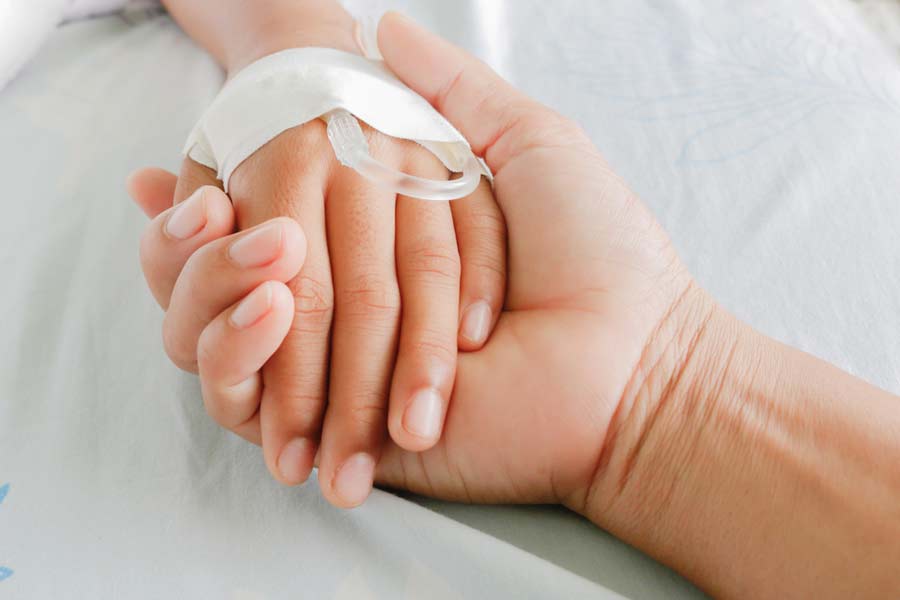
You have just been diagnosed with a serious illness and your doctor is doing their best to provide you the information you need to proceed with treatment. You are terrified, overwhelmed and have no idea how to proceed. You feel like you are living out a nightmare.
Robin Kanarek was in the same situation with her husband, Joe, when their ten-year-old son, David, was diagnosed with leukemia in 1995. Robin, though, was an R.N. with over fifteen years of nursing care experience and had the medical connections and background to navigate her son's care. But as David was ready to start high school at the age of fourteen, he relapsed, and it was discovered that his leukemia was more aggressive than his original diagnosis. As he was too weak for another two-year round of chemotherapy, the Kanareks could not find a perfect match for a bone marrow transplant for David; his only chance for survival was a stem cell transplant using his then ten-year-old sister, Sarah as a donor.
Robin and her family navigated two top health centers caring for David for almost five years. David's journey ended in despair when he died in 2000 following devastating complications from his transplant. He was fifteen years old, but their journey continued; and in the midst of their profound grief, the Kanareks attempted to make sense of what had happened to heal and keep their family intact. Their grief was so insurmountable that the Kanareks decided they needed to move abroad to heal privately and focus on helping their daughter adjust to the loss of her beloved brother, become an only child, and living in a new country, and making new friends.

It was in London that Robin started her journey to heal and give her family's life some semblance of normalcy. Two years of intense grief counseling helped her realize that she could share what she had learned from her devastating experience with her son's illness. Soon she began volunteering and fundraising for a U.K. organization that cared for adolescents and young adults with cancer. Robin realized that little attention had been given to the psychological, social or spiritual aspects of care for David or themselves. She soon learned about a subspecialty in 2006—palliative care.
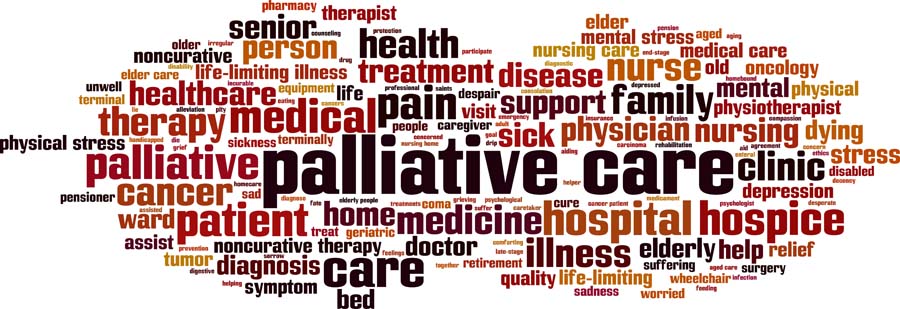
Most people, including health care providers, are unaware of palliative care's many benefits. Many equate palliative care with hospice, but it is not. Palliative care can be introduced at any time of a serious diagnosis and in conjunction with curative treatment, which hospice does not provide. Palliative care is ideally provided by an interdisciplinary team that includes physicians, nurses, social workers, chaplains, pharmacists, and allied health providers working together to address pain management, education, and medical, emotional, spiritual, and psychological support. Improving the quality of life for those who suffer from a serious or life-threatening illness is the key tenet of palliative care.
In an effort to help other families with the unique and challenging needs of cancer treatment, Robin wrote her first book, Living Well with a Serious Illness: A Guide to Palliative Care for Mind, Body, and Spirit. The topic of this book is timely. According to the U.S. Census Bureau, the number of individuals over 65 has surpassed those under the age of five. Never before have there been so many people over the age of fifty, the age when, statistically, the greatest incidence of serious and life-threatening diagnoses begins. According to the Centers for Disease Control (CDC), six in ten adults in the U.S. have a chronic disease (four in ten adults have two chronic diseases). These numbers point to a growing need for palliative care, particularly as modern medicine offers more aggressive treatment options for the seriously ill.
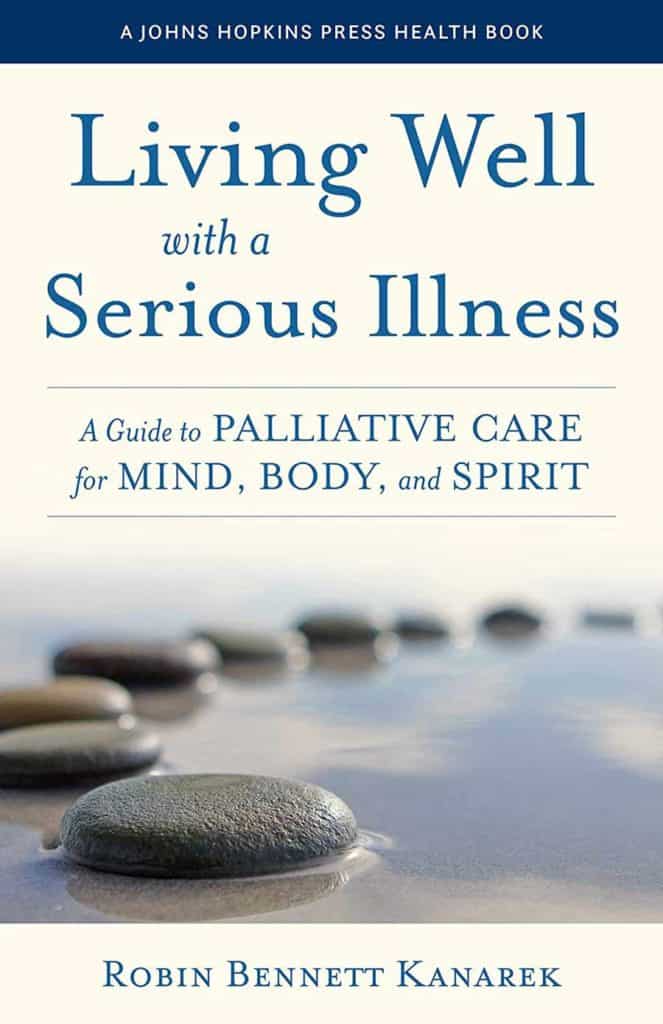
The public needs to be educated on the benefits of palliative care. Healthcare providers also require clarification on what palliative care encompasses. Unfortunately, there has been very little written in easy-to-understand language to educate the average consumer; most books on palliative care are textbooks geared toward healthcare professionals. There is a national conversation about recognizing the limits of current medicine and the importance of seeing "patients" as individuals who need and benefit from the care of mind, body, and spirit. That philosophy is the essence of palliative care.
Robin Bennett Kanarek, RN, is the president of the Kanarek Family Foundation, established in 2006, whose mission is to improve the quality of life for those affected by serious, life-threatening conditions through promoting, integrating, and educating the medical industry and the public about palliative and supportive care in all areas of health care. She lives in Greenwich, Connecticut. Her first book, Living Well with a Serious Illness: A Guide to Palliative Care for Mind, Body, and Spirit, is published by Johns Hopkins University Press. It can be purchased on Amazon.
Ms. Kanarek has performed a great service for all of us in the palliative care field. She has managed to write a book that explains, in layman's terms, what everyone should understand about the uses and benefits of palliative care. Even medical professionals will benefit from her discussions of how patients, their families, and their caregivers should be interacting when someone has a serious illness. This book should be on every bookshelf, to be read and reread as the need arises.
―Barbara Pearce, President and CEO, The Connecticut Hospice, Branford, CT
This book is a gift to both clinicians and patients. Robin shared her story from the perspective of a healthcare giver, a wife, and a mother. She speaks to the heart of how the patient and entire family is affected in the face of serious illness. The gift is in the sharing and learning we can all do to ensure David and the Kanarek family's gift of their most private and painful moments will contribute to our better journey.
―Diane P. Kelly, President, Greenwich Hospital; EVP, Yale New Haven Health
This book is essential reading for anyone who will live with a serious illness or care for someone with one―which is essentially everyone. Kanarek writes as a mother who shares the loss of her son and has spent three decades sharing her experience with others to support their journeys. It is a book written from the heart and is both a practical guide as well as a deep reflection of how to navigate the challenging, and sacred, time of the end of life.
―Betty Ferrell, PhD, FAAN, FPCN, CHPN, Professor, City of Hope Medical Center, Duarte, CA
Robin Kanarek is the ideal translator of palliative care for people living in the real world. She is a nurse and knows our health care system. She cared for her own seriously ill child. If someone you love is sick, this book is your guide to the oasis that is palliative care, often hidden in plain sight, but yours for the asking.
―Diane E. Meier, MD, Center to Advance Palliative Care, Icahn School of Medicine, Mount Sinai Hospital, New York City

Hospice programs are required to provide social work services as a “Condition of Participation” for the Medicare Hospice benefit, but many families do not realize the extensive components offered.
In fact, it can sometimes be difficult for social workers to get into homes to see families, where home hospice care is being given. Although there can be feelings of wanting to withdraw from outside interventions or visits, more often it is because people do not fully grasp the wide breadth of what hospice social work offers.
The first standard of hospice social work is to do what is called an initial assessment. It provides an early glimpse of where the patient and his or her loved ones are, in terms of their understanding of the illness and its progression, preparation for decisions that may need to be made, and where they are in the grief process.
It is not uncommon for families to express their feelings that they have no need for any such help, and to see taking any advice or counsel as somehow being a sign of dysfunction, or an inability to care for their loved one properly.
Social workers go far beyond what that would imply, about being there to fill in where a family cannot cope. Although that can be true, a more useful way to think about their services is to compare them to a compassionate and expert event planner. Death has its own set of rituals, red tape, financial considerations, and especially emotional ramifications. Sitting with someone who does this for a living can not only bring comfort and clarity, but can ease many practical burdens that arise with sometimes overwhelming speed, as health declines.
One important early conversation, with the patient if he/she is able, or otherwise with the family or friends, is about the goals of care.
That last question leads to what is perhaps the most joyous part of a social worker’s job. Maybe there is an upcoming marriage that can be accelerated. Social workers have planned weddings, both for patients and for their children and grandchildren, sometimes even in our inpatient facility or on its waterfront grounds. One family wanted a Disney-themed wedding, to commemorate a family trip, and the social work staff decorated the room, while the arts staff brushed up on Disney tunes to play at the bedside. A beaming bride had mouse ears on, to complement her wedding dress.
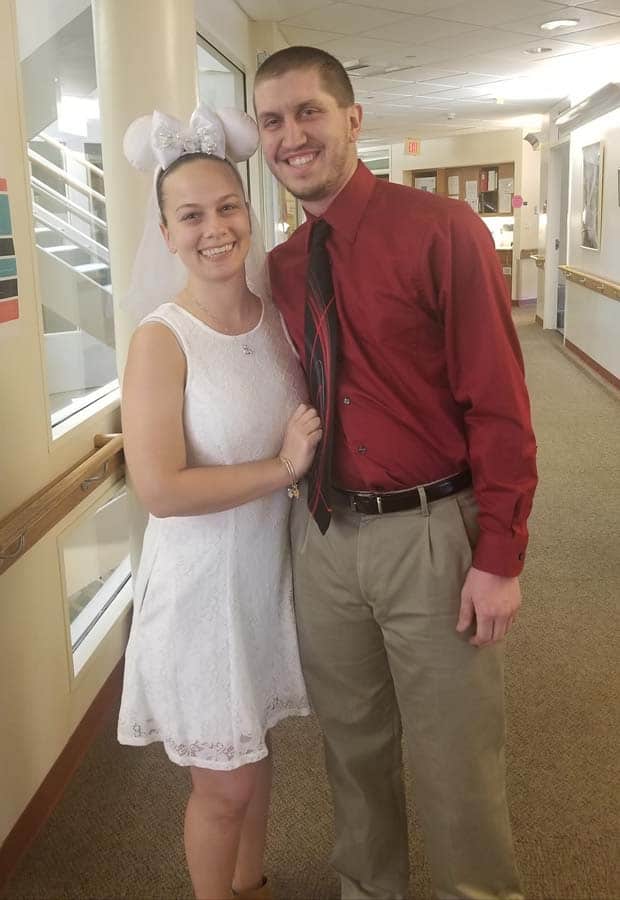
Other ceremonies have taken place with regularity, such as birthday parties or anniversary celebrations.
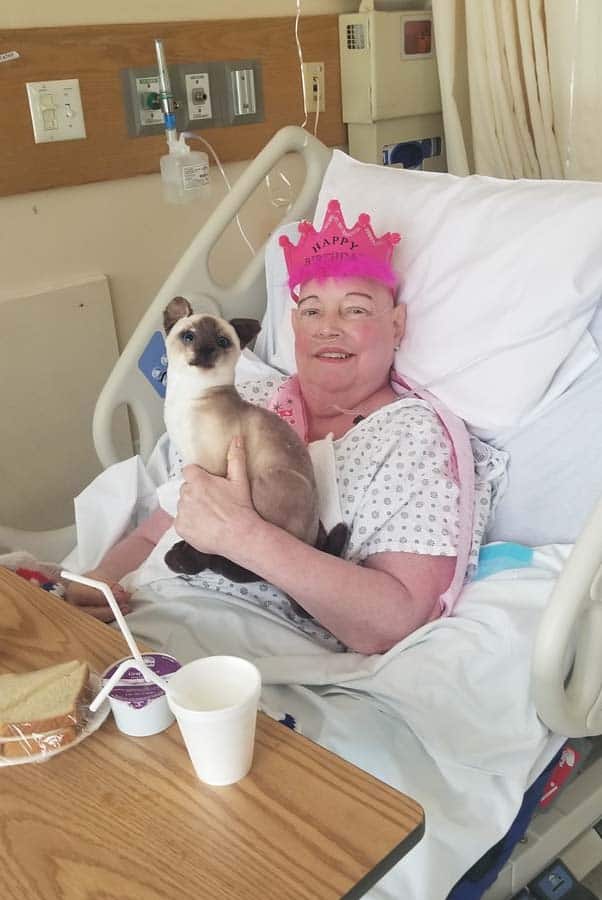
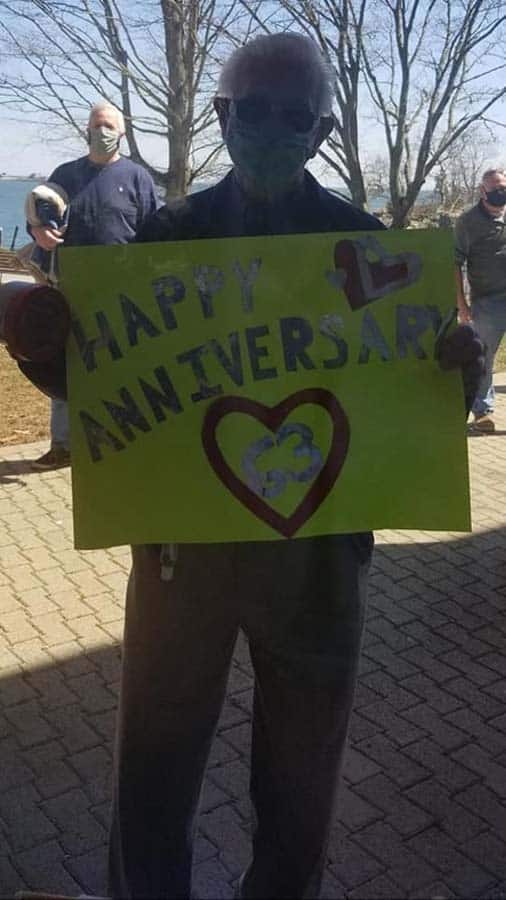
One of the most poignant was a graduation, where the professors came in academic garb, to present the patient with her recently earned diploma. In all of these cases, the social work staff works with the family to achieve those goals.
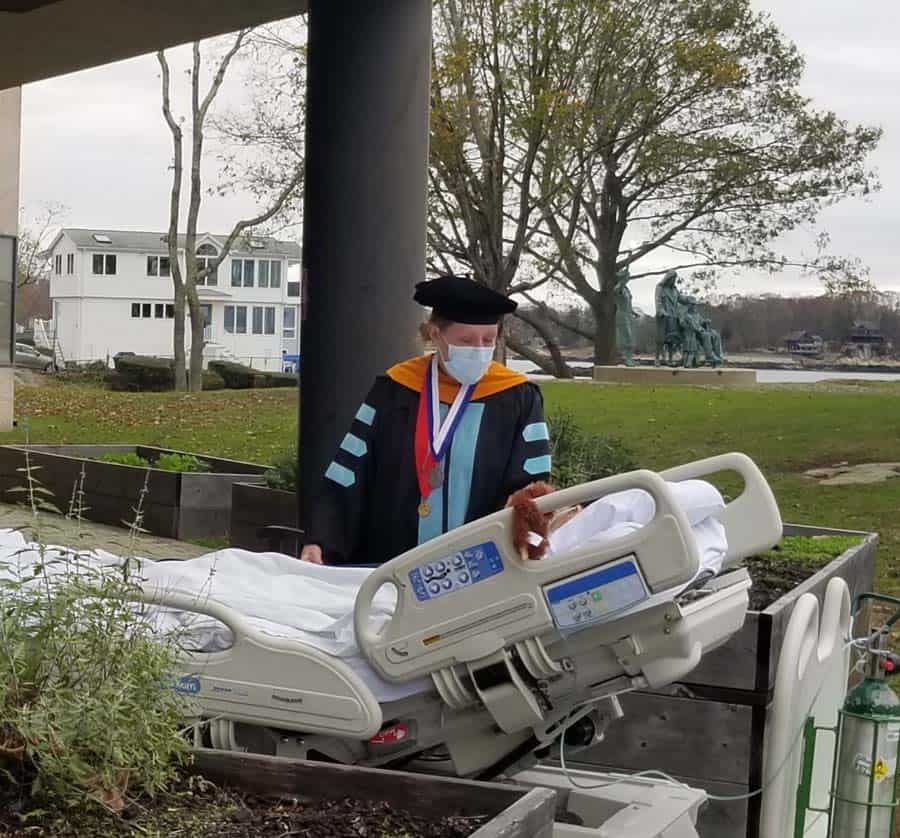
Goodbyes of all kinds also fall into hospice social workers' purview. Dealing with children’s grief, and the preferences of the patient and other relatives can be a difficult, but rewarding task. There may be times when patients need transportation by ambulance, in order to say those farewells to a person or place, and social workers can make that happen. When the hospice care is not in the home, there can be arrangements made for pets to be present. Even a horse came to our backyard, so that its owner could see it one last time.
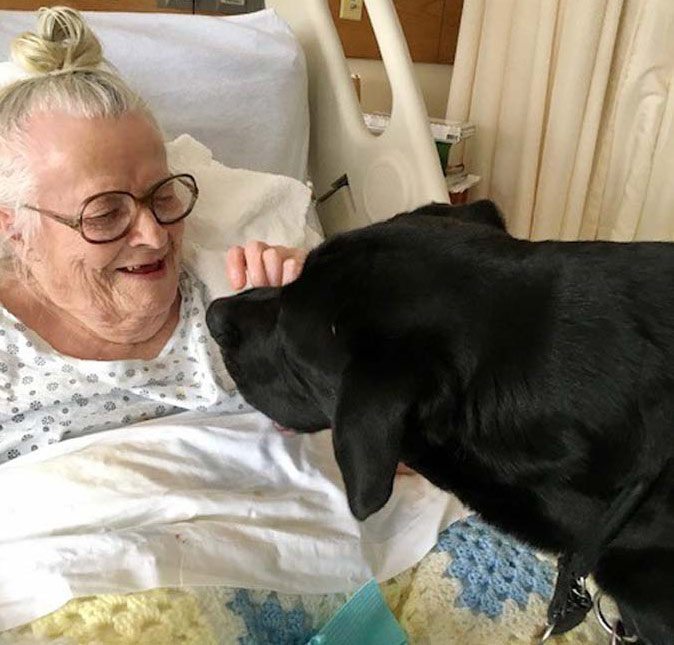
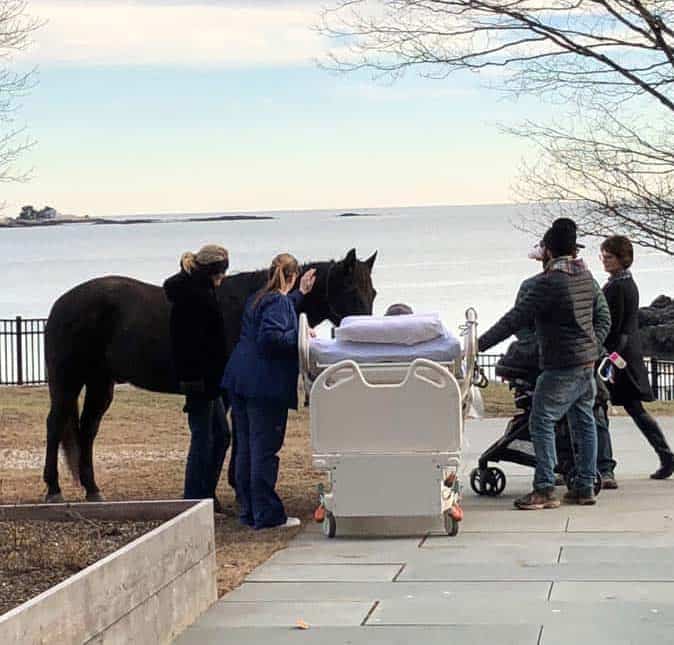
Last wishes can range from a favorite food to a video to leave behind, from putting toes in the ocean at the end of life to finishing a last book or article. Whatever closure means becomes the social worker’s goal to facilitate.
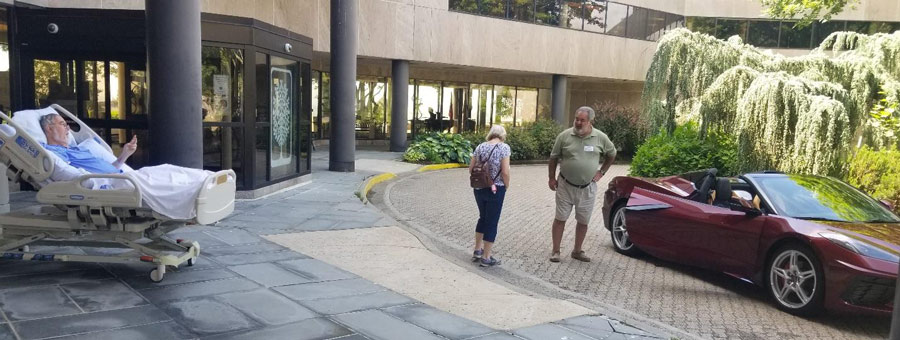
Planning a memorial service or funeral falls into the category of last wishes, as well as deciding about DNR/DNI or treatment choices. Even broaching those subjects with family members can be something in which the social worker participates, especially when some relatives have not understood or accepted the disease trajectory.

Financial considerations, including Title XIX applications, can be explained by social workers. They also do discharge planning when people can no longer live independently, and can help to narrow the options and help with the choice of a nursing home, should that be necessary. They are charged with making sure that the patient is safe in whatever environment is chosen.
When there are no relatives, a social worker can even take over some of the role that a family member would otherwise play. They can reach out to people that the patient wants to see, help with household tasks, or just keep someone company. One often-made comment about the end of life is that the days may be short, but the minutes and hours can be long. Having someone objective with whom to talk can be so important.
By now it is clear that social workers fill a vital role in many aspects of hospice care, no matter the setting of that care. They are special people, and they bring a combination of practicality and compassion that is so necessary for both patients and families. Whether they are serving as coordinators or counselors, they can play a part in every patient’s journey. Developing a relationship with them early in the process can make a difference all along the way. If there is a question of any kind, and the social worker doesn’t know the answer, he or she probably knows how to help get that answer.
Most of us know social workers in some setting, because they are so versatile in their career choices. What they do varies tremendously by location, so a school social worker or a prison social worker may do very diverse jobs. It is hard to imagine, however, that anyone could have a position that is more fluid that that of a hospice social worker. They are truly indispensable.

Much has been written about the best time to enlist hospice care, and there are certainly many medical and personal decisions to make. Since we see patients and families deal over and over with the same issues, we thought it might be useful to provide an overview of what they consider at such an emotional time. While the priorities may differ from person to person, a framework can help, especially at a time when it may be difficult to think calmly and concisely.
Sometimes he or she is no longer able to verbalize desires, and sometimes those choices may change. For example, a wise doctor once gave a talk that can basically be summarized by stating that, when facing the possibility of death, most people choose life. That means that compromises in mobility, independence, and comfort, that may previously be rejected on principle, may be tolerated and even chosen, as illness progresses. Therefore, stated directives about health care choices may go out the window. If the patient is not competent, it becomes harder, and what he/she said at some earlier time may still be honored.
It is often true, as the end of life unfolds, that there are dips in ability followed by plateaus before another event takes the patient to a lesser state of functioning once again, which can be followed by a second plateau. This can go on for days, months, or years. The patient is often unhappy at the outset, but can become inured to the lesser capability, and even accepting. Someone who refused a walker or wheelchair, for instance, may use one when there is no practical alternative.
When speaking with the patient’s physician, the issue of further treatment can arise, and it can be hard to hear the real answer being given. Often, the easiest question for the doctor to answer, and the easiest to interpret, can be this: What would you do, if this were your parent, your spouse, or your child? Put that way, he/she is not being asked what to do, what is possible, or what the correct choice is. It is simply one person trying to judge the alternatives, based on what others might have chosen in similar circumstances. Asking about specific procedures is often better to frame in a statistical way, to avoid misunderstandings: What are the chances that this will work? What percentage of people get a meaningful extension of life from this?

Once the medical side of the equation has been addressed, it is time to move onto preferences and feelings. The most basic question, then, to answer is this: What are your acceptable standards for living? This covers many things, from feeding tubes to mental capacity to chemotherapy. It is up to the patient to decide, whenever possible, how he or she wishes to proceed. Many choose to be DNR/DNI. (N.B. Although our inpatient facility takes admissions of those who wish to be resuscitated or intubated, we ourselves aren’t trained in those procedures, so call 911 like everyone else.) Others decide to forego further treatment, especially if it is painful or not working. Some even refuse food, particularly when the will to live has gone. Our job, not unlike that of family members, is to honor the patient’s wishes to the best extent possible. We strive to make someone comfortable and peaceful, and do not assume that we know what that means for any specific person.
That brings up the second question: Do you have any unfinished business, or last wishes? We hear so often about the proverbial bucket list, and many of us are busily checking things off that list now. However, there comes a point at which it seems not possible to fulfill further wishes. However, whenever possible, we as staff try to make those dreams a reality. That’s why we have weddings at Connecticut Hospice, either of patients, or of family members.
Sometimes, the request is to feel the ocean water on their toes one more time. In one such case, a social worker brought the patient’s bed to the water’s edge, and dumped buckets of water on his feet. He passed away within a couple of hours, a happy man. Going home one last time can be important, especially if there have been prolonged hospital or nursing home stays. That has been arranged for some people. Saying goodbye can mean seeing a beloved pet, and we have had them at Connecticut Hospice—most notably, a horse on the back lawn.
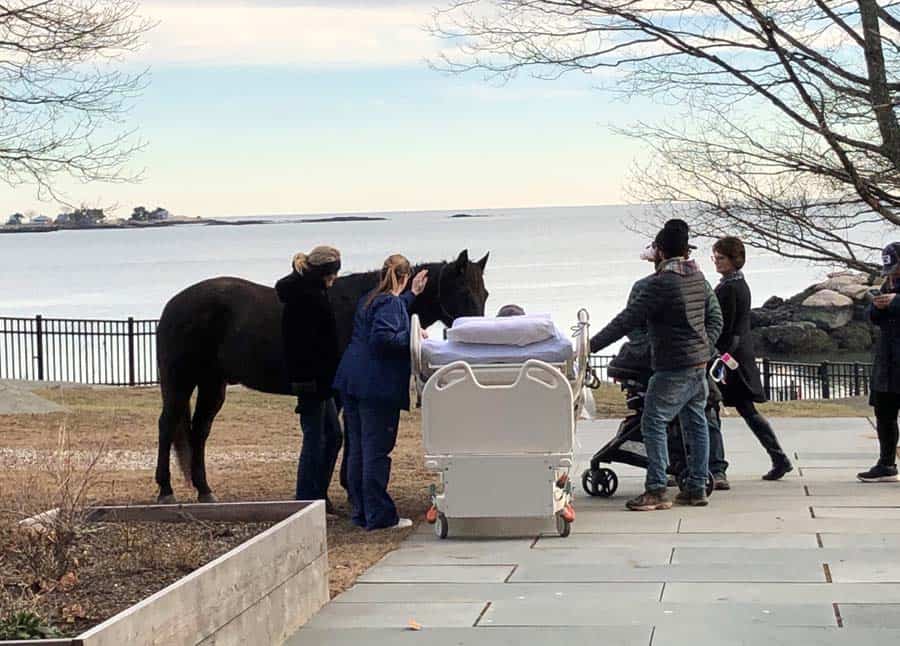
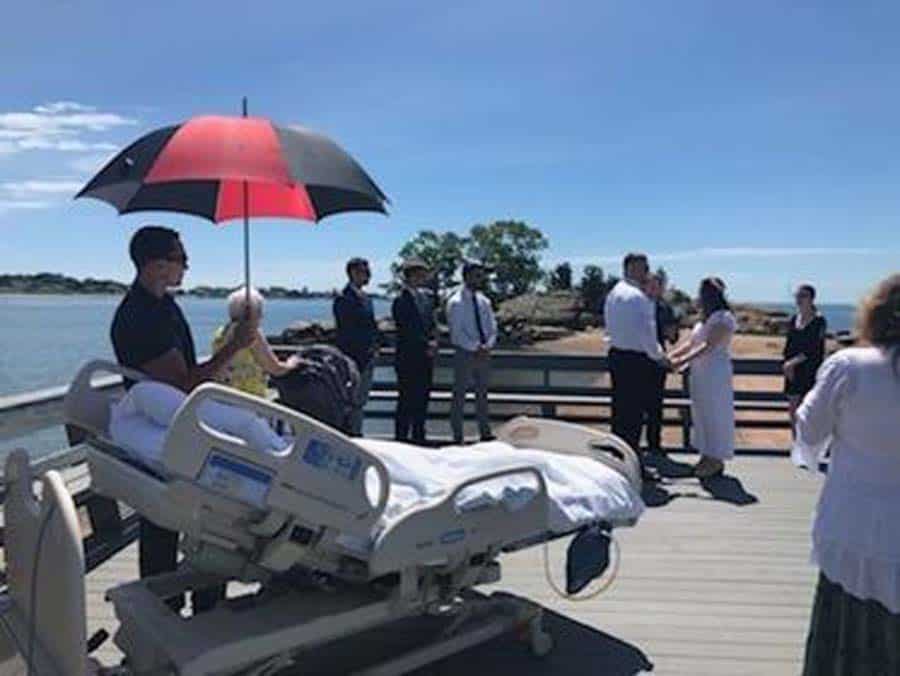
We often tell families that it is important to say three things: I love you; I forgive you; and we will be ok if you leave us. So many people end up regretting that they stopped their loved one from talking about death, which can be an important part of the dying process. Letting him or her express final emotions can be very satisfying for them, and for the listener as well. Peace means many things to many people, but often it comes from letting negative emotions go, or apologizing or reconciling with someone. Helping that happen begins with asking the patient about closure.
Again, it is hard, but important, to resist changing the subject, or saying that there is plenty of time to discuss things later. The patient knows his or her timetable best of all, and it can be a great comfort to settle some practicalities. Not infrequently, patients choose lesser levels of medication, even when it means more pain, in order to keep a clear mental status. Often that is for the purpose of having such discussions. They can even be prompted with your own question: Is there anything you want to tell me?

For the many people who find this all difficult, they should realize that they are performing a great service is allowing tough questions to be answered. Providing someone with the gift of being heard is something you can do for him or her, when there is little else you can do. Even prompting memories allows the patient to realize that he or she will not be forgotten—a basic human desire, and one we are all likely to fulfill. Creating memories at the bedside can enrich those final days, and leave those mourning with smiles, even through tears.
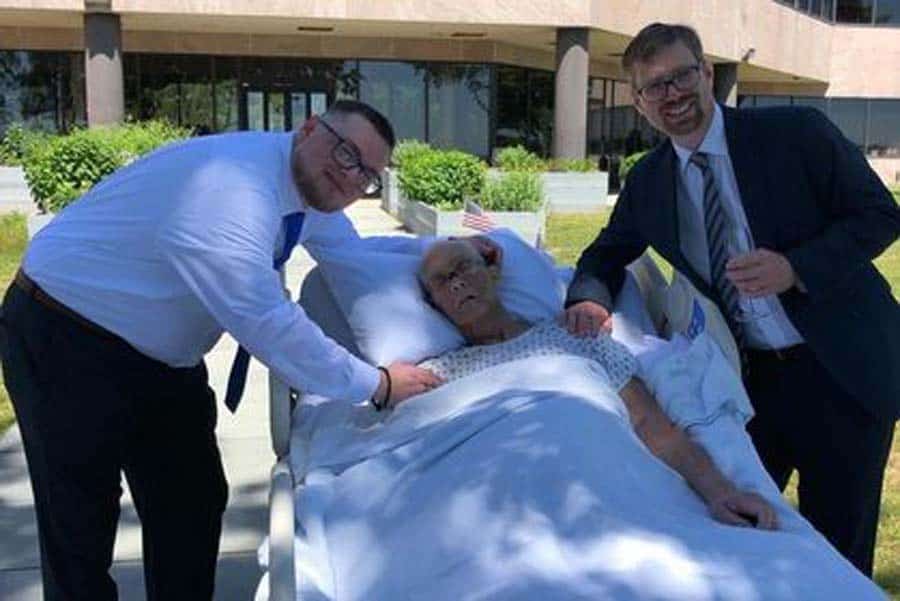
Connecticut Hospice has always been an institution that honors final wishes, choices, and requests. We are grateful to be able to provide patients and families with the comfort that brings, and a privilege to have shared those moments with so many through the decades we have served our communities.
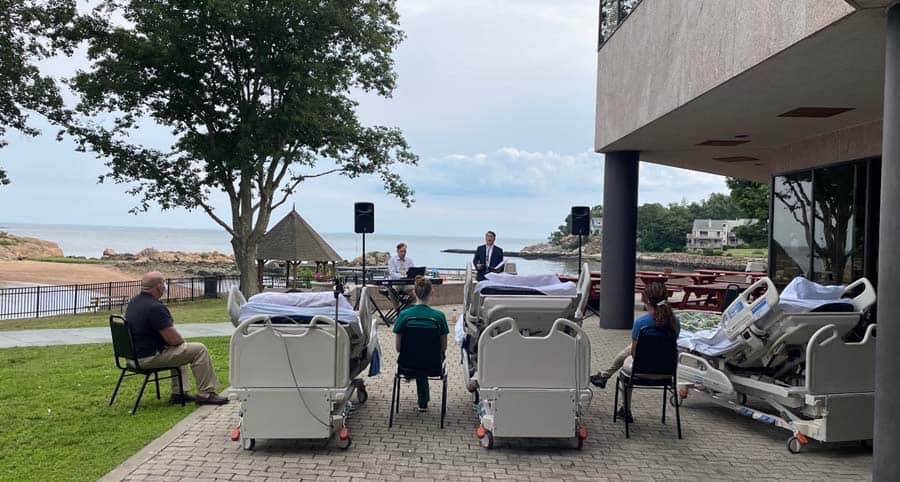


One of the members of the Hospice team is a chaplain who interacts with other team members in providing total care to our patients who are facing end-of-life issues. In the context of hospice care, spiritual issues and/or spirituality is not confined to one singular religious experience. The chaplain has a broad knowledge of many world religions and is sensitive to their understanding of how these challenges intermesh with the patient’s faith journey at this point in time.
Spirituality may not include an organized faith journey for some of our hospice patients. A sense of meaning in their place in the world in relation to nature, humanity, and a sense purpose all come together in a form of recognized spirituality. The Connecticut Hospice chaplain is here to listen and accompany the patient through this journey.

Spiritual Care is an important component of the comprehensive care plans at Connecticut Hospice. The Hospice Chaplain sits and listens firstly to the patient and hears what they perceive as what is occurring to them. They may express fear, have an unknown feeling of uneasiness, or lack acceptance of the concept of end of life. The chaplain hears the many concerns and transforms these issues into a plan of care. This plan is utilized to help the patient address their issues and to be comforted in the end-of-life process. As chaplain and patient progress in their relationship, adjustments may be made to further a compassionate plan of care that is individually designed to each person’s perceived needs.
This process includes family and friends who can give insight that the patient, because of illness, is not able to remember. The chaplain is also present for family members who struggle at this time of perceived loss. There are so many emotions present: anticipatory grief, anger, depression, and guilt. They begin to manifest themselves in many diverse ways. The chaplain, who is a trained medical-spiritual professional, can address these issues as they arise in the patient and with family members. The Chaplain, as a member of a highly trained team, receives observations from the social worker, nurse, doctor, and team directors that prompts changes to the plan of care to be sensitive to comfort and compassionate care.
A healthy spiritual outlook connects to an overall sense of well-being. This can affect the management of pain, producing a higher level of mental physical comfort. The main hospice goal is always comfort. The chaplain aids in accomplishing that objective.

Chaplains understand the intimate relationship patients have with religion, spirituality and the nature of earthly existence and, specifically, different ethnic cultures. They have spent many hours studying cultures and how they affect each and every being. Even though the family and patient may heavily rely on local clergy, the chaplain is critical in providing ongoing presence and developing a friendship that brings comfort and assurance to all concerned. When the family has its own clergy or spiritual guide, the Hospice Chaplain can assist in notifying that person, and arranging a visit. This specific attention from a pastor is different from the broad spectrum of what spiritual care can encompass.
Looking once again at families, as time progresses and their loved one’s illness progresses, new emotions and expressions among family members emerge. A weekly call from the chaplain can be very beneficial to the family, just knowing someone else cares, someone else understands, someone else knows how they feel.
The Chaplain may suggest reading material that can guide them in their emotions. Sometimes there is a specialized plan for children in what maybe a first-time experience with end-of-life issues. The chaplain is prepared to gently explain what is happening to grandma and to compassionately listen to and answer their questions.
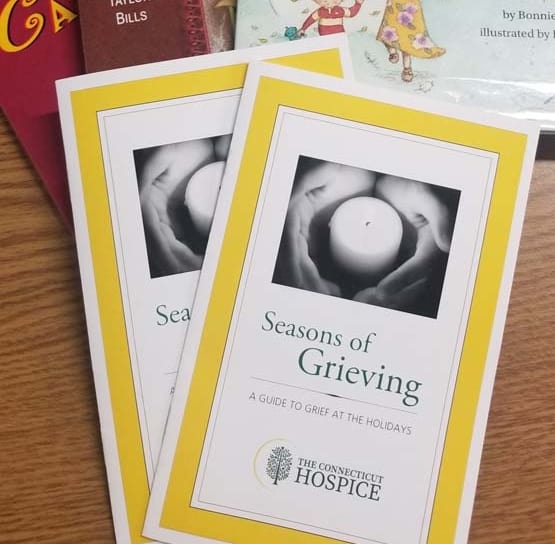
As time progresses, we continue to honor the hospice philosophy that no one should approach death alone. As a critical part of the team, the chaplain is present, if applicable, to once again inform the local clergy, if desired by the patient or family. He or she will be invited to join in with the team in aiding the patient to transition comfortably. The Chaplain, who has at this point developed a relationship with the family, has become a trusted member of the patient’s circle. The chaplain knows the patient’s needs and can help by expressing them at this crucial moment. Again, no one dies alone. Family members will be called and informed that death is near and the chaplain will be present as a guide.

Family members may need counseling or compassionate listening at this time. The chaplain can find a neutral place to allow family members to express their feelings and needs. When death occurs, the family can gather with the chaplain for prayer and blessing.
The journey can continue with the family with helping in appropriate funeral planning in keeping with cultural, religious, and spiritual understanding of each unique family situation. In the weeks ahead the chaplain and a specialized bereavement team member will check in with the family.
Sometimes we are asked to give prayers, or even facilitate a service for the family and friends of the loved one. Then, along with the social workers, we usually turn to the Bereavement Director, who steps in after death, for the thirteen months of grief counselling formally provided. While time limits are fluid, the year or so of formal groups or sessions is seen as a benchmark by Medicare, that accommodates most survivors in that setting.
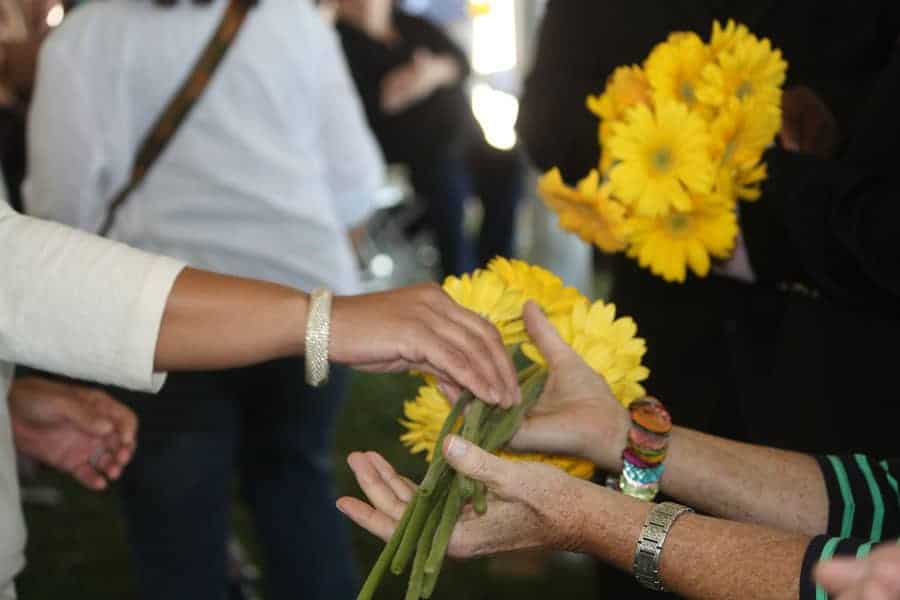
Currently, Connecticut Hospice has a team of three pastoral care professionals, along with six social workers and a Bereavement Director. In addition, we have many volunteers, who participate from the time of admission, through the transition itself—especially when family members are not able to be present—and afterward, to assist in many ways. Many of them have suffered similar losses, and this is their way of giving back what hospice care provided to them in their time of need. Every team member offers a unique and highly specialized view towards hospice care. The chaplain is one of the team that aids all concerned to a compassionate, informed journey through the end of life.


Food is thought to be one of life’s greatest pleasures. Most of us equate food as a means to nurture and show love. To share a meal is to have a sense of togetherness. We know that nutrients from the food we consume are used to build muscle, provide energy, and most simply, enable all our bodies’ intricate processes to occur. For patients that are nearing the end of life, it is often hard to recognize and accept that the body does not require, nor can it utilize, the nutrients from food the way it once did.
End of life does not indicate a patient’s age or illness, but rather the nearing of the end of a patient’s life. This stage can be the result of a serious chronic illness, such as; heart disease, cancer, stroke, dementia, diabetes, or an accidental injury. Typically, when a patient is initially diagnosed with a serious chronic illness, the patient receives Palliative Care, which focuses on relief of symptoms and stress as a result of the serious illness. Dietary changes may be necessary, but food remains a major source of nutrition and health for the patient.
When a patient is known to be in the end of life stage, they most likely would be receiving hospice care. Hospice Care differs from Palliative Care in that life expectancy is six months or less. Some patients accept their terminal prognosis and begin receiving hospice care immediately, while others chose to continue pursuing a curative treatment. When hospice care does begin, the focus on food and nutrition changes dramatically.
Throughout life the body works hard to grow, build and repair, but the opposite happens at the end of life. The body focuses on transitioning to shutting the processes down, thus requiring less in the way of nutrition. When Connecticut Hospice starts providing hospice care to a patient, whether at its inpatient facility in Branford, in a patient’s home, be it a private residence or another facility, dietary support is an additional discipline that can be beneficial to both patients and family members.
Understandably, there are often many questions and concerns surrounding food and nutrition at the end of life. Concerns over the possibility of “starvation” or “dehydration” are quite common. Dietary care at the end of life can be confusing and unsettling to many. It is often hard for loved ones to recognize that certain conditions may not be “fixed’ or “cured” through good nutrition in a terminal illness. Meeting loved ones where they are on their journey and recognizing how appetite and the ability to eat may change can be an invaluable tool to have. Connecticut Hospice’s Dietary Support staff helps to educate families on these changes and assists in navigating the best way to support their loved ones.
Understandably these concerns can lead to a great deal of distress for the patient and family, and they often find themselves spending much of their limited time worrying, bargaining and at times arguing over food. It is helpful to know that patients at the very end of life do not experience hunger and thirst the way they once did.

At this stage, it is important to educate the family members and/or caregiver on the changes their loved one is going through nutritionally. The enormous amount of energy once needed to process and digest food is no longer required for terminally ill patients. Oftentimes these processes are already strained due to the body’s condition or diagnosis. Forcing foods and/or fluids into the system can produce added stress on the body systems. Nausea, vomiting, bloating, and abdominal discomfort are just a few symptoms that patients may experience when foods or fluids are forced at end of life.
“As hard as it may be, we encourage families to follow their loved one’s cues surrounding foods and fluids at the end of life,” says Connecticut Hospice’s Dietary Support Team member, Alycia Mulhern, RD.
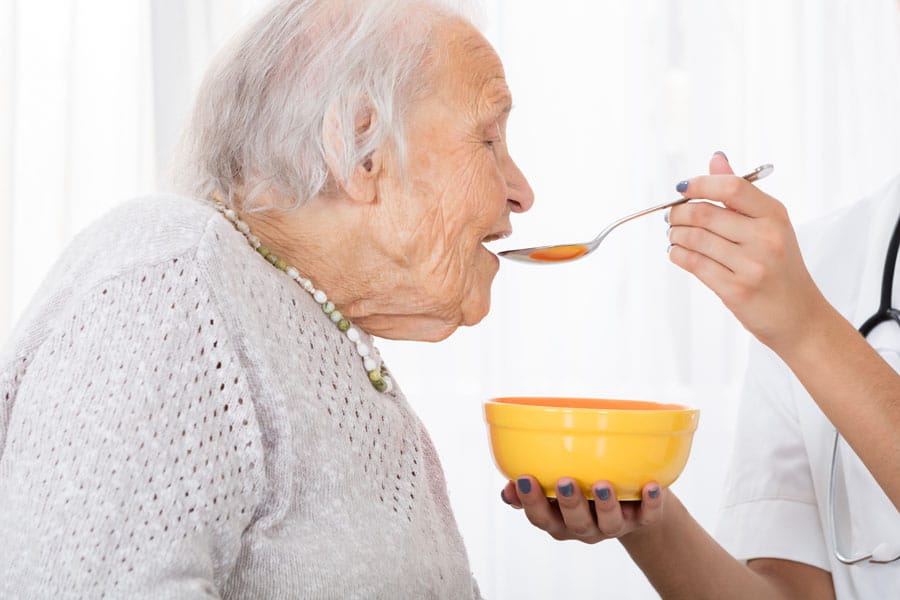
By refusing to eat or drink, the patient is communicating that they are not feeling hunger or thirst and are more comfortable without it. The Dietary Support Team at Connecticut Hospice makes themselves available to answer questions from family members to help lessen fears and anxiety during an already stressful time.
It is the hope of the Dietary Support Team at Connecticut Hospice that by following these recommendations as a guide, it will allow families to spend precious time with loved ones without unnecessary pressure on food and eating. Sitting together holding hands, listening to music, reading a book, or watching a program together are all great ways to feel close and enjoy each other’s company.
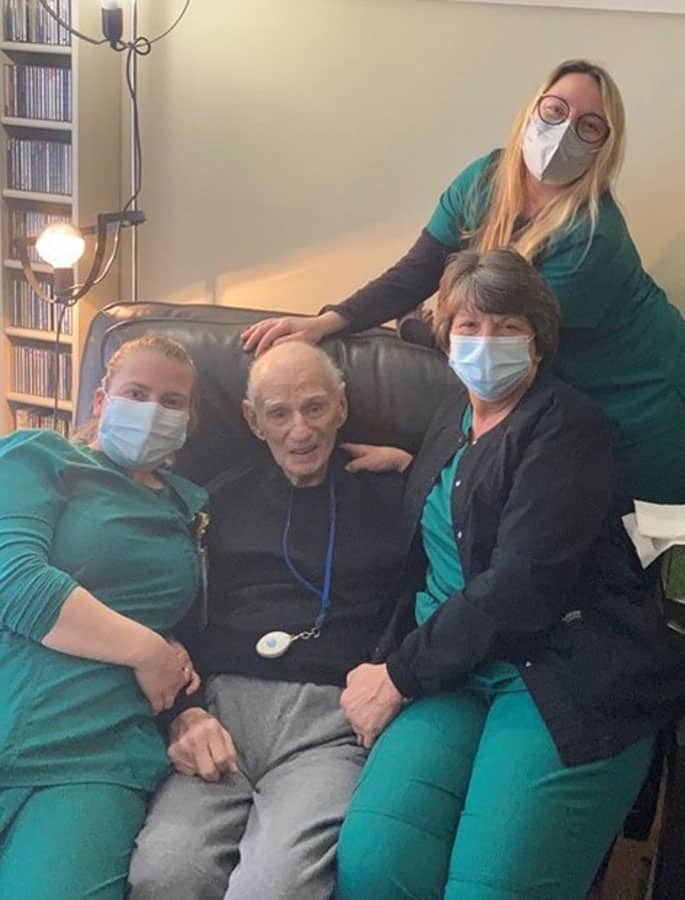
In some cases, a patient who is not eating will still want to be part of a gathering that includes food. Recently, Connecticut Hospice held a 100th birthday party for a home care patient. He was smiling ear to ear and had no cake. It is all about meeting the patient where they are.
At the end of life, the goal for loved ones is to transition peacefully, and as comfortably as possible. This includes honoring patients’ preferences when it comes to foods and fluids. It also means trusting that they know their bodies and are doing what it takes to make their process and quality of life the most comfortable while they transition.

The biggest surprise to most people who enroll relatives in Home Hospice Care is that the care isn’t 24/7. In fact, the care is about ten or so hours per week, meaning that the patient’s family is really the main caregiving unit. Still, many services are offered, and understanding how best to engage with the hospice team is very important in working smoothly together to provide excellent end-of-life care.
It is extremely helpful to everyone if the patient enters hospice care more than hours or days before death. Many of the care offered—social work, spiritual care, and volunteer assistance—is unable to be given if the patient is actively dying at the time of admission. See our list of ready signals to help decide, "When's the right time for hospice care?"
Since that admission is prompted by a physician referral, the family should initiate that conversation with the primary care provider, or the specialist, if the topic has not arisen, and active curative treatment is coming to an end. Asking what a doctor might recommend to a relative is often a good way to open the communication channel in a way that allows professionals to give an opinion without seeming too directive.

Once the referral has been received by the hospice organization, an assessment will be done by a medical professional, usually a nurse. That initial visit can take place in a hospital, a nursing home, or a residence. The admissions visit can take a couple of hours, and families should feel free to ask whatever questions are on their minds.
No information about the patient is too trivial to convey, as the more the team knows, the better they can customize care for that patient. Social work and spiritual care will also be in touch for first visits. They can address many issues that might be on the minds of the family, and can help with financial planning, funeral services, or any part of the grieving process.

Once the patient has been entered into service, a routine is usually established. Home health aides may be engaged to help with everyday tasks, such as bathing, grooming, or feeding. While exact timing requests cannot always be honored, due to staffing issues, every effort is made to provide help in the part of the day when it would be most useful. The case manager, who is usually a registered nurse, comes less often than the LPNs and aides, and is frequently juggling many families at the same time, so don’t be surprised if arrival times need to be flexible. It often helps to remember that your needs will be addressed once they are present, and that others may wait when you have a pressing issue.
Because the team members are busy—and that is no surprise, given what we all know about the shortages in all parts of the medical field since the start of the pandemic—families may be hesitant to call between visits. Nurses and supervisors are all adamant that patients and families should be encouraged to call with questions, especially when there have been changes in the patient’s condition. Knowing what to look for is crucial in being able to stop problems before they become bigger, and having them in the medical record early can make a big difference to everyone.
Another important time to call the care team is for medication questions or errors. No issue is too small, whether it be a missed dose or uncertainty about whether the dose was ingested, to avoid calling. Addressing symptoms is one of the main goals of hospice care, and being able to do that sooner is in everyone’s best interest.
In extreme weather conditions, whether it is a winter blizzard or a summer storm leading to power outages, the hospice team will try as best they can, to provide what might be needed ahead of time. Should there be reasons to worry about patient safety during a storm, they can arrange for transfer to an inpatient facility for respite care.

Respite Care can also be accessed for caregiver relief or breakdown. If a family member who is primary in the caring process is sick, away, or unable to cope with symptoms of the patient, respite care in an inpatient facility is available for up to five days. This is an important safety outlet for the exhausted family members, and should be discussed with the home hospice team if it is necessary.
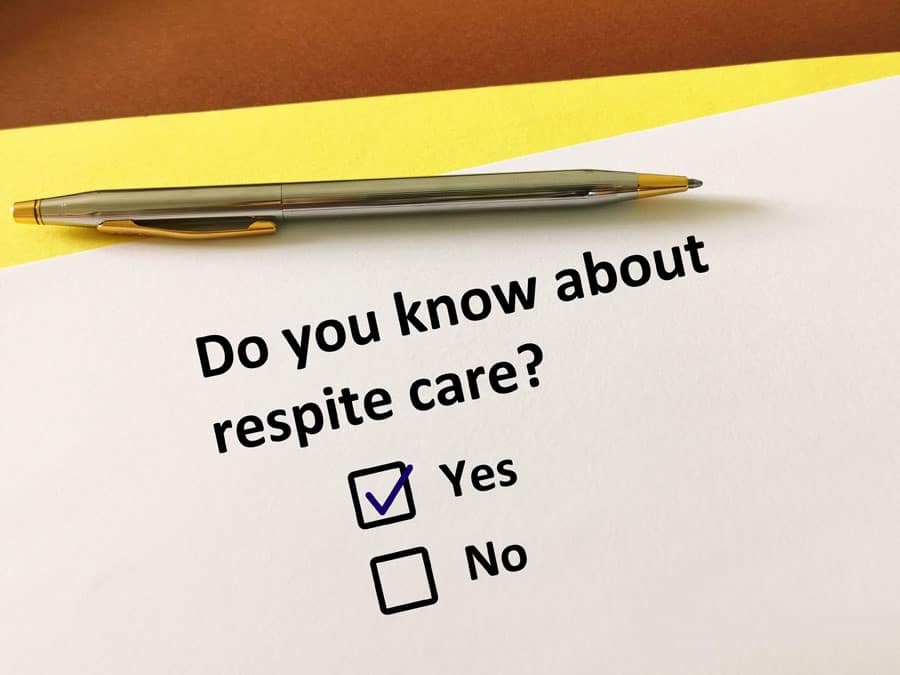
Although home hospice care is given when the “normal course of the illness, untreated” would result in death within six months, many patients in fact outlive that prognosis, sometimes for years. Home hospice care is designed to improve the quality of life, and sometimes that results in an extension of that life span. In those cases, a doctor or an APRN is sent to recertify the patient at various points in the care. Your team will arrange that home visit, which is referred to as a FTF, or face-to-face.
Once the end of life approaches, the team will make sure that you know how to use the emergency drugs in the care package provided for you. Again, do not hesitate to call if you are unclear later as to the proper administration of those medications, or about any other signs or symptoms you might observe. You will be told, and given materials to remind you, that you do not need to call 911. An emergency visit by EMTs will result in lifesaving measures that you may not want, and will very likely land the patient in an emergency room, and sometimes facing a hospital stay. It can be hard, but honoring someone’s DNR (Do Not Resuscitate) request will provide the patient with the final location of his or her choice.
If the patient passes away, call the number provided by the hospice, who will come out and make the pronouncement. Your hospice team will be on hand as soon as is possible, to help with any immediate issues, and will later assist in getting the equipment removed and disposing of medications. Bereavement services will also be provided for thirteen months to the surviving family.
This article is meant to address common issues and questions that arise in the course of providing home hospice care. If there is one thing to take away, it is to call the hospice with any concerns, whenever that may be. Support is a major component of hospice care, and providers are there to guide you through what is an emotionally difficult transition, with expertise and comfort.
As a not-for-profit, we depend on generous donors to help us provide customized services and therapies that aren’t completely covered by Medicaid, Medicare, or private insurance.
Please make a gift to help us sustain the highest standard of care.
Admissions may be scheduled seven days a week.
Call our Centralized Intake Department: (203) 315-7540.